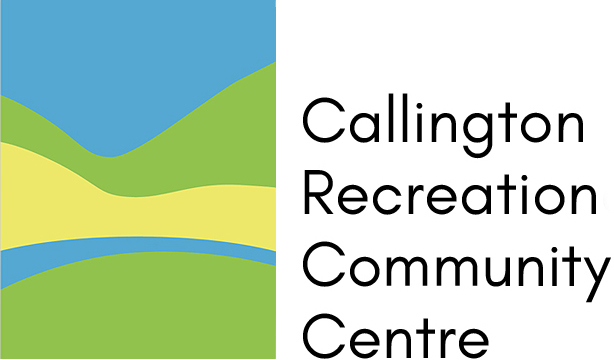
Callington is situated on the Bremer River around 60 kilometres east of Adelaide. Founded in 1847, it has retained many of its nineteenth century buildings and allows a unique glimpse into a mid nineteenth century mining community. Many of the original buildings are heritage listed and within a local government Historic Precinct. A number of buildings and other structures are listed on the State Heritage Register and an area encompassing the entire town, including the Bremer Mine site, was included on the Register of the National Estate in 1980. It is acknowledged as being Peramangk traditional country.
Callington’s Mining History
By 1847 there were already some farming settlers and people working small mineral lodes in the Bremer area, probably living in temporary dwellings along the Bremer River. Many had settled their families and began small farms as tenant farmers of the South Australian Company and the Paringa proprietors. These
companies had taken up 20,000 acres of land under a Special Survey following the discovery of copper at nearby Kanmantoo.
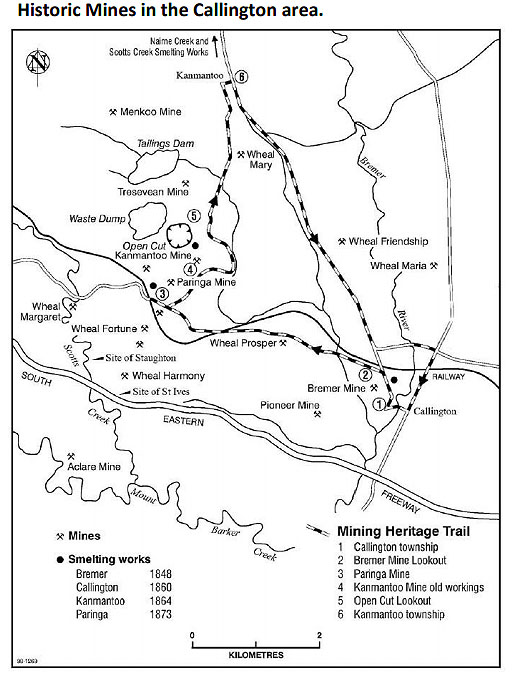
It is estimated that by 1848 there were almost 100 people living in
the area corresponding to the address “Bremer”.
In 1848 Cornishmen John and Mauris Thomas established the Bremer Smelting Works (E21) north of Callington on the Bremer River, initially concentrating low grade ore from the various Kanmantoo mines. It became the first commercially viable smelter in Australia.
In 1849 the Government decided to survey a new road direct from Balhannah to Wellington on the Murray River, passing through the site of a planned new township being surveyed on the Paringa property on the Bremer River. In this year copper was discovered at Callington, uncovered by John Kiernan whose dray broke open stone to reveal the distinctive colours of copper mineralisation. He
received a reward of fifty pounds from the Mining Claims Office, then the equivalent to around six months’ wages.
The new blocks in what was to become the township of Callington sold well. Not only did they have access to the new road, a reliable source of water and proximity to the smelter but the discovery of copper led to the establishment of the Bremer Mine adjacent to the township. (W1)
Like all small mines it had its ups and downs. Before 1851 as many as 17 mines were worked on the Bremer Special Survey but the discovery of gold in Victoria forced the closure of most as miners left for interstate. The Bremer Mine lay idle until it was sold, along with the entire remaining township blocks, in October 1856. The Worthing Mining Company then took over the workings and expanded, installing two steam driven pumps in 1857 and 1859 to keep the workings dry as operations had gone below the water table.
Production again became steady and in 1859 the two sons of Mauris Thomas, Charles and Mauris junior, built another new smelter for this company.(W3)
In 1864 the Adelaide Almanac described the Bremer Mine as having more machinery than any other mine in the State. It also had 150 miners and smelted its own copper, reducing the ore to “regulus” of around 50% copper thereby reducing transport costs.
Around 250 people were employed in the mine and associated smelter, in cartage and providing timber for the operations. The population of Callington District had risen to around 600 and together with other mines in the district the area became known as the “Cornwall of the Colony”.
However, the continuous high inflow of water, low grade copper ore, declining copper prices and the steady increase in production costs forced the Bremer Mine into liquidation in 1870. It was revived by the new owners, the Bremer Mining Company, in 1872 but closed again in 1875. With the surge in copper prices early in the 20th century the associated Boundy Lode was briefly reopened, but closed shortly afterward.
The mine’s insatiable appetite for timber to shore the workings, to fuel the smelting operations and fire the boilers for the pumps has left the legacy of the denuded landscape still obvious today.
Accounts from the 1840s of the district describe it as being well forested, with abundant timber to support the mining operations then being developed. By the 1860s the shortage of timber was causing significant delays at the smelter, with mine timbers being sourced from as far as the current Botanic Gardens site in
Piccadilly Valley, 44 kilometres away.
Today the Bremer Mine is on private property and can only be viewed from Back Callington Road or North Terrace.
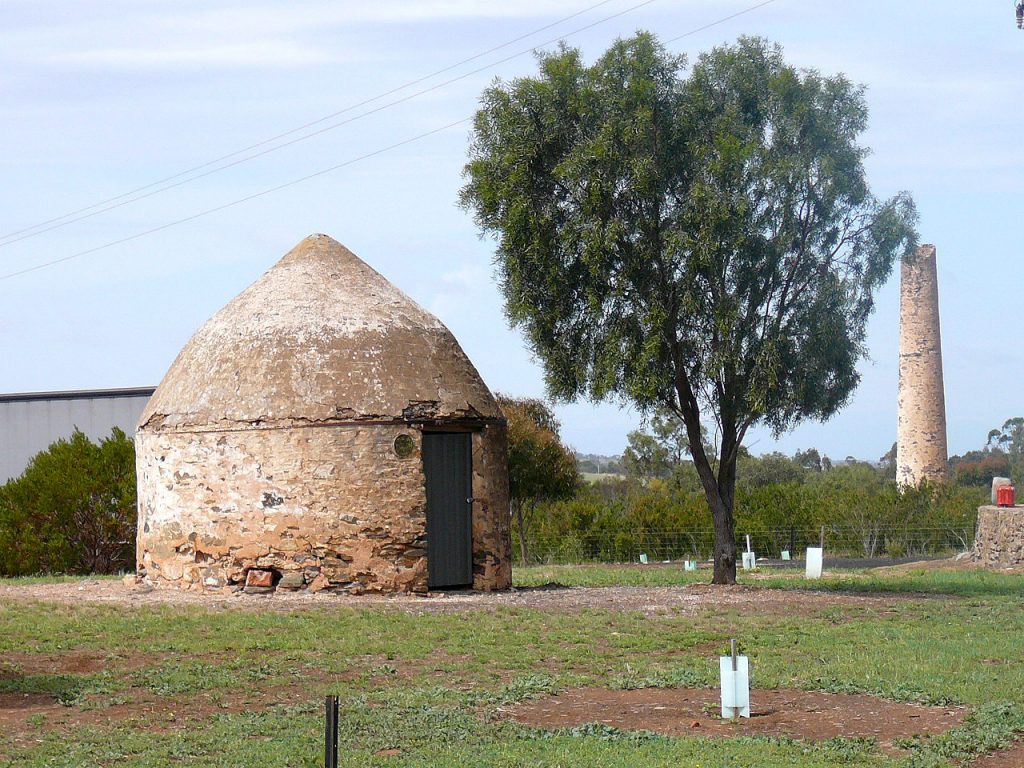


The People and the Township
The first miners were Germans from the Hahndorf area, closely followed by other nationalities, including the Irish, but by far the largest contingent were the Cornish who joined the mining works by 1848.
Settling along the banks of the Bremer River they built cottages in the style of their homeland, constructed of local stone with shingle roofs supported by undressed wooden timber, as is still seen in Phillip’s original store. Many of these original cottages still survive, often with later additions. (W9, E3, E4, E5, E6)
This influx of miners and settlers resulted in the first town being surveyed and laid out in 1849-52. This settlement, until then known as Bremer, was officially named Callington after the copper mining town in Cornwall. The layout of the township, in common with many early townships, reflects the influence of Colonel William Light, South Australia’s first Surveyor General.
East Callington was laid out in 1865. Stores and hotels were soon opened to service the growing community and the construction of a swing bridge for foot traffic in 1864 (E1) over the Bremer River assisted in consolidating the township of Callington.
The Callington Arms Inn, later the Callington Hotel, (W5) was licensed to Thomas Lean in 1850 and the Tavistock Hotel in 1859 (W13). One of the earliest successful shopkeepers was William “Billy” Phillips who arrived in Callington as a miner. (W12, W23)
By 1872 there were 6 stores in Callington, including a blacksmith’s shop and a bank. Churches, places of worship and schools were also established. The original Cornish miners built a Primitive Methodist Chapel in 1850 (W24) and the Wesleyans’ built their first church in 1851. New churches in 1862 and 1864 respectively replaced these initial buildings. From 1856 Lutheran services were held in the Primitive Methodist Chapel (E3) until the Lutherans built their own church, St. Peters, in 1864. (W19) Catholics worshipped in Kanmantoo at St Thomas’ Church, built in 1858.
The miners were determined to give their children a good education. Schooling was provided by the first Methodist church from 1850 and by 1869 there were three schools in the township. In 1858 enrolment of girls outnumbered boys by two to one, because boys were employed at the mines as “pickey boys”, sorting ore into higher and lower grades and as “horse boys” for the horse powered lifting whims.
In 1887 the Education Department School was opened and remains the State’s longest operating primary school on the same site. (W4)
Besides dances organised for special occasions, sport provided social life in the form of rifle shooting with a German style shooting club from 1862 to 1875, followed by another rifle club in 1880.
Horse races were run intermittently from the late 1840s and Cornish wrestling and skittles were popular among the miners.
Cricket took place in the 1880s and at the turn of the century tennis provided sport for women for the first time. In 1908 a skating rink was built where the current Memorial Hall now stands, paid for by shares sold to the local community. The hall remains a community owned facility.
Law and order in Callington had been the responsibility of the mining companies and Mounted Police from Nairne until the population and the accompanying increase in crime resulted in the concerned residents petitioning the Chief Secretary, Henry Ayers, for a police station, which was subsequently built in late 1867.
Callington was always important as a communications centre after the major new road was built in 1850, and in 1874 the telegraph came to the town. The railway (W2) followed in 1886.
The Adelaide to Nairne railway was opened in 1883 but the stretch to Callington took another three years to build and at the time was considered the most expensive stretch of railway in Australia.
Since the building of the South Eastern Freeway through the Adelaide Hills, the township of Callington has become more accessible, being only a forty five minute drive from the Old Toll Gate in Adelaide.
Until recently Callington was predominately a mixed farming community but is increasingly becoming a dormitory suburb for people commuting to work in local towns or to Adelaide.
Because of its many heritage buildings the town has provided the perfect backdrop for the filming of television mini-series: Golden Fiddles in 1990, The Battlers in 1994, and Rain Shadow in 2007.
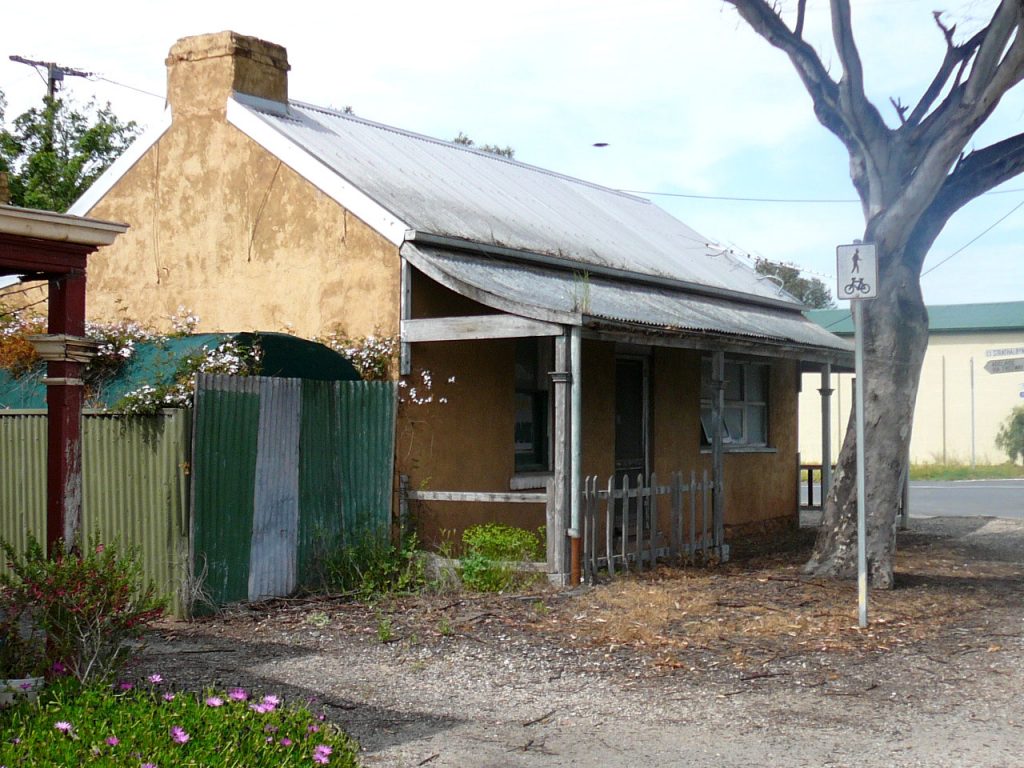
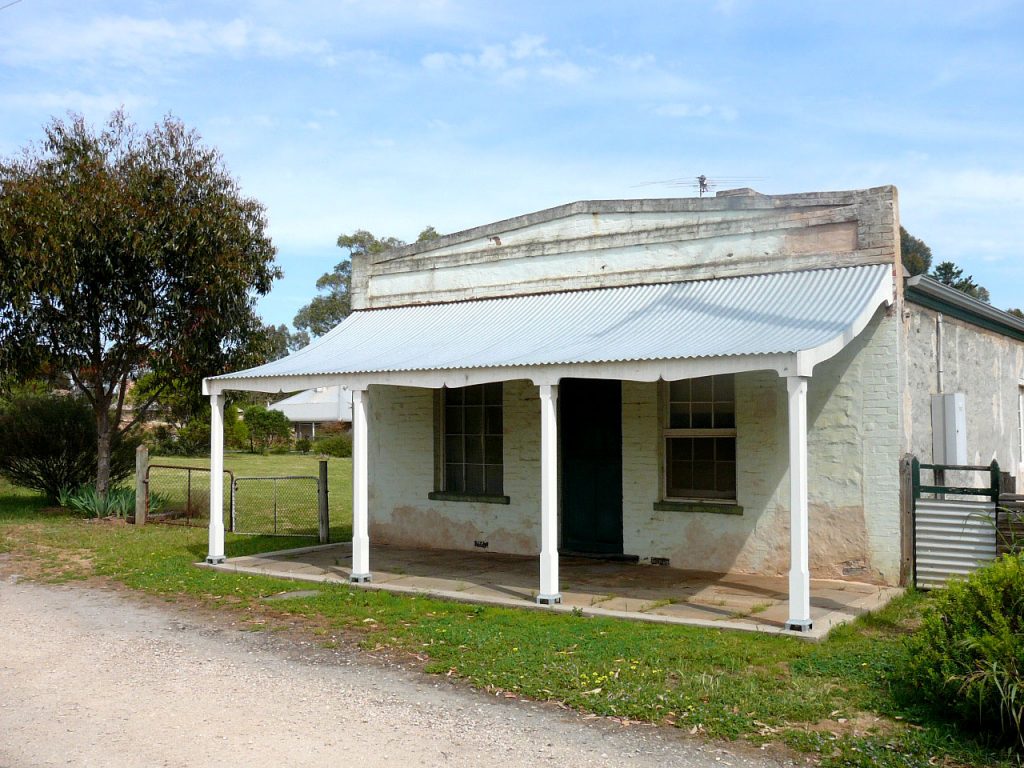
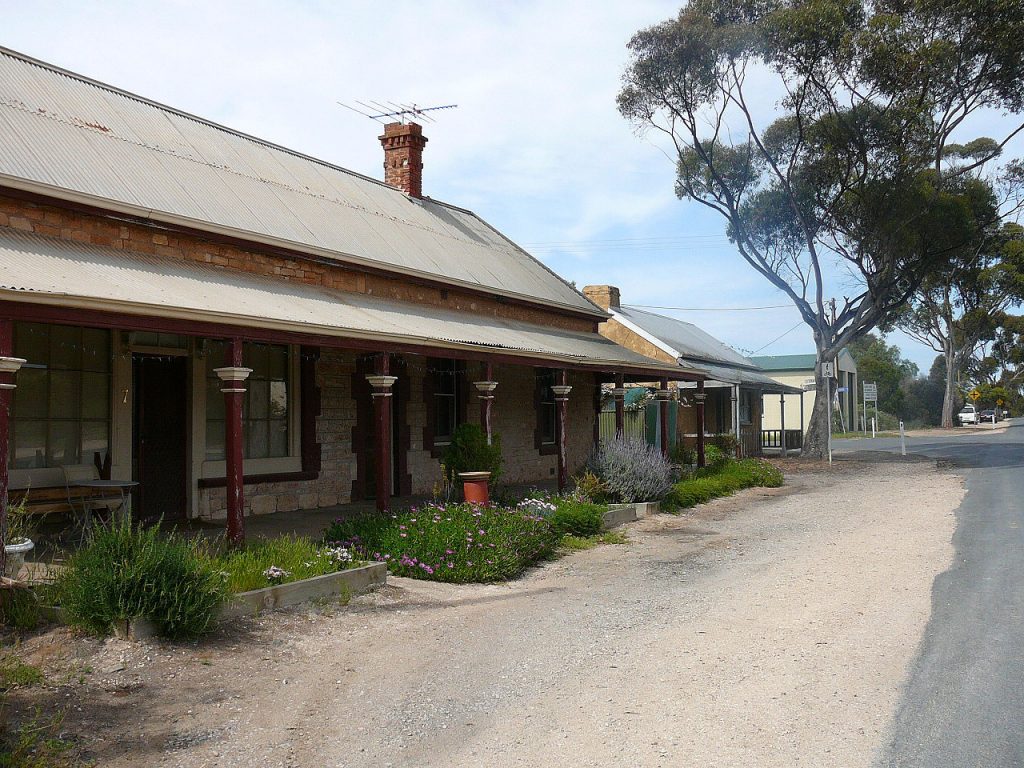
Callington was once far more extensive than it appears today, as many of the old buildings have been demolished. It has been particularly fortunate in retaining its original character and historical integrity. The growth of the recent decade has largely been confined to previously undeveloped areas of the town and
the centre has maintained the illusion of an intact nineteenth century village.
You can enjoy your tour on foot or in your vehicle. Many of the historic buildings in Callington are now private homes. Please respect the privacy of the residents by not entering their property.
Acknowledgements: M Coligan, S Benham Page, H Seager, M Jaensch, AR Mills, H Seager, R Ashton, E Appelbee
The Community Centre and Ovals
Back in the 1960s our community helped turn a shed with roller doors into a besser block club room, that stood for many years as a testament to our community’s can-do attitude.
It is with great pride that we once again came together and raised over $1 million in funds to create our new Callington Recreation Community Centre.
We look forward to many years of service to our local community.
